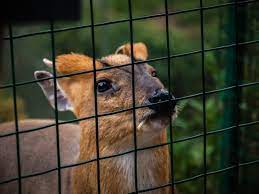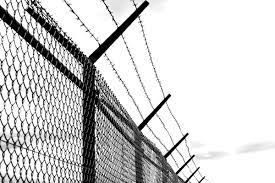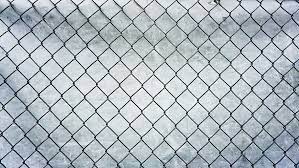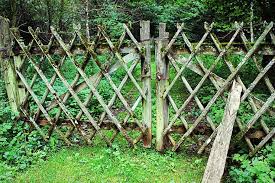The easiest approach to getting a low-cost dog fence is to DO IT YOURSELF! Thus, we created a guide to assist you in creating the ideal DIY dog fence for your house.
Moreover, No matter what you are looking for, a permanent solution or a temporary one, a DIY dog fence can help you design any type of fence.
We have also added different types of DIY fences, which include portable fences and digging fences. Plus, if you have any other innovative ideas, you can make your own version of the dog fence.
However, let’s see what exactly these ideas have kept in store for you.
5 Best Dog Fence Ideas & Installation Guidelines (2025)
This article includes five different and affordable DIY dog fence ideas which you can choose according to your convenience.
Hence, without any further ado, let’s take a look at all the types of DIY dog fences:
1. PVC Deer Block Netting
The PVC deer block netting dog fence is unquestionably the cheapest option.

The portable fences are simple to disassemble; all you have to do is take the PVC off the roll, remove the stakes, and store it until you need it again. Making them ideal for short use.
Many different stakes can be used to make your dog fence enclosure, but most builders choose green metal fence posts from the hardware store.
It only requires spreading the mesh while connecting it to the posts and hammering them into the ground. If necessary, use zip ties.
Due to the materials’ durability, you will have a high-quality fence that will keep animals out and your dog in.
How to build PVC Deer Block Netting:
#1: Outline the perimeter of your fence.
#2: Lay out the corners of your fence.
#3: Start installing the fence
#4: Keep continuing the installation
2. Welded Wire Fencing
DIY-welded wire mesh dog fences are a dependable way to keep your dog in its territory while also improving your property’s appearance with clean lines without appearing overwhelming.

Metal posts are the simplest way to erect your Homemade welded mesh dog fence.
The length of fence you need, the number of posts needed, and their location will vary based on the dimensions of your yard or the perimeter you plan to build.
How to build Welded Wire Fencing:
#1: Mark The Posts’ Locations.
#2: Hammer Your Posts.
#3: Make Rails.
#4: Start Spreading The Welded Wire.
#5: Build a Gate
3. Chain Link Fences
This option may cost more than welded wire, but it is still far less expensive than a wood fence.

Chain link fencing has developed over the years and may be a beautiful decorative alternative for your yard.
It is commonly used for dog enclosures in neighbourhoods. A chain link fence is the ideal DIY project because it doesn’t need to be put down across its full length due to its rigidity.
The majority of the time, metal pipes are used as stakes while installing chain link fencing, and the fencing is then simply attached to the posts and a few other locations.
A reliable and durable alternative that works well in both urban and rural neighbourhoods is a DIY chain link dog fence.
How to build Chain Link Fences:
#1: Determine and plan the fence.
#2: Gather material.
#3: Layout and determine the fence.
#4: Create holes for posts.
#5: Place the posts.
#6: Connect the tension bands with gate hardware.
#7: Install the caps of the posts and rails.
#8: Spread out the fence roll.
#9: Attach A Tension Bar.
#10: Stretch the spread fence, tighten the tension bands, and tie the fence to the rails.
4. DIY Electric Conduit Pipe Fences (with PVC)
Due to the additional safety and security, it offers to their dogs. Many people choose electric conduit pipes or EMT fences.

We loved the aesthetic appeal this fence brings to the backyard. Conduit pipes have nice, clean lines and a solid appearance; they make a lovely, safe, and reliable space for dogs.
How to build DIY Electric Conduit Pipe Fences:
#1: Decide Fence Perimeter Length.
#2: Decide on the type of wire and charger.
#3: Drill holes in PVC.
#4: Set a ground rod.
#5: Set PVC posts.
#6: Thread Wire Through Holes.
#7: Tension Wire.
#8: Connect Wire To Charger And Ground
5. Wood Pallet Fences
A variety of supplies can be used to make DIY dog fences! A pallet fence is a terrific choice for building a dog fence that is extremely affordable and can withstand both warm and cool conditions.

Pallets are inexpensive and widely available at supermarkets and hardware stores. Before you realize it, you’ll have a great fence to contain your pet without going bankrupt.
How to build Wood Pallet Fences:
#1: Pound in the post fence.
#2: Permanent post fence.
#3: Pallet Fence ideas.
Where can you get supplies for a DIY dog fence?
Your one-time stop to get the best quality supplies for a DIY dog fence can be at amazon.com if the platform is available in your region. Right from a small nail to a drilling machine, every tool needed to build a DIY fence is available on the Amazon online shop.
However, you can get these supplies in your nearby hardware tool shop if you don’t have enough time to wait for a delivery.
Moreover, you can also opt for DIY kits to build a dog fence without using many tools and hard work.
Related Read:
Conclusion: DIY Dog Fence
DIY Dog fences are useful for keeping dogs within your yard or for preventing your dog from entering specific garden areas.
They can be constructed from a variety of materials, such as wood, metal, wire, and even PVC, and they do not need to be expensive to be sturdy enough to handle your dog.
If You are wondering about How Does it works, Click here to know more about dog fences.
Lastly, we sincerely hope you’ve enjoyed learning how to construct a DIY dog fence that both you and your dog will like!
FAQs: DIY Dog Fence
You can use trolley lines as an alternative to a dog fence.
A chain link fence is the easiest DIY fence option to install, which helps you to keep your dog within your reach.
You should search for a fence that is five or even six feet high because a four-foot fence is unlikely to dissuade a Husky, Golden Retriever, or Labrador.
Many pet owners choose a chain-link or slat fence because they are inexpensive, low maintenance, and simple to suit a space. As the spaces among the boards are small enough to prevent most creatures from trying to fit through, they’re also perfect for dogs who like to dig.
